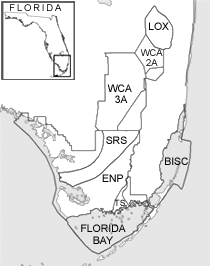Authority:
(Grunow) Krammer
References:
Krammer K. (1997):"Die cymbelloiden diatomeen. Eine monographie der weltweit bekannten taxa. Teil.2. Encyonema part., Encyonopsis and Cymbellopsis", pg.91,92, Fig.143:1,4,5,8-25, ; Krammer K. & Lange-Bertalot H. (1997): "Susswaserflora von Mitteleuropa", Vol.1, Taf. 134, fig.23-32, p.327; Patric R. & Ch.W. Reimer (1966):"The diatoms of the United States", Vol.2, Pl.4, fig.12a-13b, pg.33,34; Podzorski A.C. (1985): "An illustrated and annotatet chack-list of diatoms from the Black River Waterways, St. Elizabet, Jamaica", Pl.18, fig.4;
Synonyms:
Cymbella microcephala (Grunow in Van Heurck 1880-1885), (?)Cymbella minuscula (Grunow 1875 in A. Schmidt et al. 1874-1959), (/)Cymbella microcephala f. major (Grunow in Van Heurck Syn., Atlas 1880-81), Cymbella ruttnerri (Hustedt 1931), Navicula incompta (Krasske 1932)
Ecological Preference:
Fresh
Description:
Valve is slightly to very slightly dorsi-ventral, with convex dorsal margin and straight or convex ventral margin, and rostrate or capitate ends; axial area is narrow with inconspicuous central area; raphe is filiform, with narrowly arched branches (proximal branches are somewhat dorsally inclined), and ventrally curved (somewhat indistinguishable) distal ends; indistinctly lineate striae are variable, parallel or slightly radiate in valve centre, slightly to moderately radiate near the ends; length is 10-20µm, breadth is 2.5-4µm (Hustedt [1930] gives length up to 30µm); striae count is 20-25 in 10µm (around the centre) becoming 26-30 in 10µm (near the ends); Krammer (1997) describes this species as having 38-42 punctae in 10µm
Notes:
some specimens have higher recorded lengths and breadths than type
Projects:
Southeast Florida Coastal Mangroves
Florida Bay Paleo Project
Dosing Project
CERP
Transect Project
